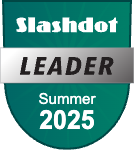This article is part of Beyond the Prompt — a campaign exploring Creativity and AI through the voices of industry leaders. Discover more stories, educational content, and our Shortest AI Film competition on the full campaign page.
For as long as I can remember, I’ve been drawn to tools that let me break things apart and reassemble them in unexpected ways. Whether it was ripping apart old electronics as a kid or experimenting with obscure design software in my early twenties, I’ve always believed that creativity lives in the space between control and chaos. That’s exactly how I see AI today: not as a magic button, but as a collaborator in building a personal, evolving visual language.
The conversation around AI in design right now feels overly focused on prompts. People treat them like secret passwords to unlock perfect images. But for me, the prompt is just the starting point, it’s the seed, not the tree. I don’t chase hyper-specific phrasing or get obsessed with replicating a certain look. Instead, I focus on what I’m trying to feel in the final image. What atmosphere am I chasing? What tension do I want to create? The AI is there to help me explore those questions, not answer them for me.

When I first started integrating AI into my process, I approached it the same way I’d approach a new plugin or camera: with curiosity and a healthy dose of skepticism. Early results were either too polished or too random. It took a while to figure out how to use AI not as a replacement, but as a way to introduce friction. I began feeding it surreal, contradictory prompts just to see what it would throw back at me. Often, it was the weird, broken images that sparked the best ideas.
One experiment I’ll never forget was training a model on my own archive. I wanted to see what an AI version of ‘me’ would look like. The results were technically flawless, but there was something missing – the quirks, the imperfections, the little visual accidents that give work personality. That experience taught me a valuable lesson: your visual language isn’t just the sum of your past work. It’s the result of your curiosity, your mistakes, and the risks you take at the moment. That’s why I rarely publish AI-generated images straight out of the model. I treat them like raw material. I’ll deconstruct them, collage elements, repaint textures, or layer in analog techniques. AI introduces ideas I wouldn’t have arrived at alone, but it’s the remixing that makes them mine.

To me, AI feels like creativity on steroids. It accelerates the ideation phase, offering hundreds of directions at once. But with that speed comes a risk: it’s easy to get lazy, to pick the most visually striking result and move on. The real challenge is curating, refining, and bending those results to your voice. If you don't, your work might look impressive, but it won’t feel personal. And that’s where your visual style comes in and why it should never be static. I’ve always believed that a creative’s style isn’t a fixed identity; it’s a language you keep expanding. AI has forced me to rethink parts of my own aesthetic. It’s made me notice patterns I didn’t even realize I was repeating and inspired me to break them.

My advice to anyone working with AI? Stop obsessing over prompts. Start obsessing over what you want to say. Use AI to challenge your habits, break your own rules, and get uncomfortable. Let it expose the blind spots in your style and push you to evolve. Because in the end, a personal visual language isn’t about finding a formula, it’s about constant reinvention.
AI is the most powerful tool we’ve had in decades, but it’s just that: a tool. The real work, the meaning, comes from the decisions you make after the model spits out an image. And that’s where your voice lives.
Learn more about Vasjen Katro here.
Beyond The Prompt FAQs
How should creatives approach AI as a tool for visual development?
Stop obsessing over prompts and focus on what you want to say. Use AI to challenge habits, break your own rules, and get uncomfortable. Treat AI-generated images as raw material to deconstruct, collage, repaint, or layer with analog techniques. The prompt is just the seed, not the tree—real work comes from decisions made after the model generates an image.
What's the risk of relying too heavily on AI-generated content?
The risk is getting lazy by picking the most visually striking result and moving on without curation and refinement. While AI accelerates ideation and offers hundreds of directions at once, work might look impressive but won't feel personal without bending results to your voice. A personal visual language requires constant reinvention, not just impressive outputs.
How can AI help develop a personal creative style?
AI forces you to rethink parts of your aesthetic by exposing patterns you didn't realize you were repeating and inspiring you to break them. It introduces ideas you wouldn't arrive at alone through friction and unexpected results. Use AI to challenge your habits, expose blind spots in your style, and push you to evolve beyond fixed formulas.


















.png)







